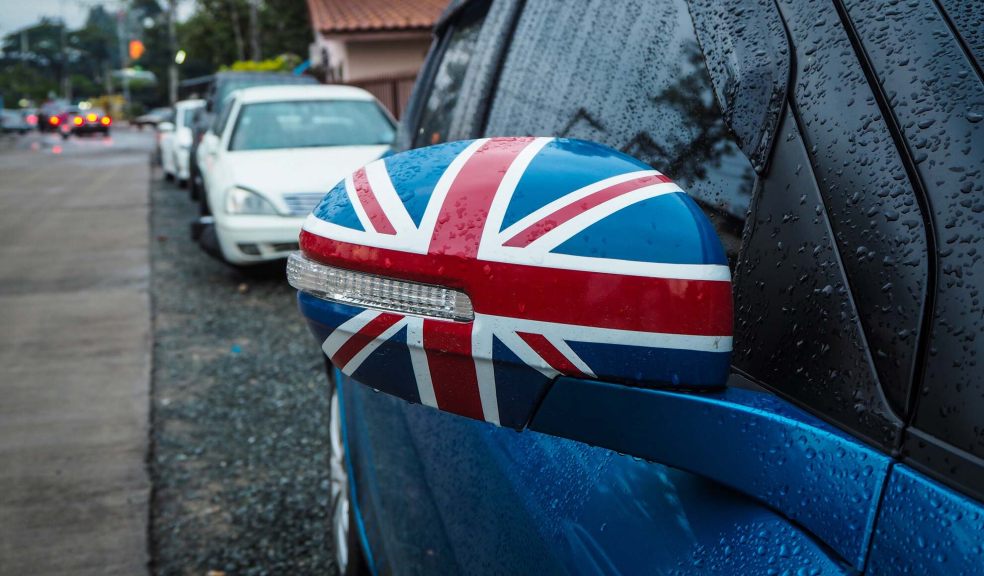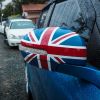
Buying a Used Car? How to Check UK Car History
If you're planning to buy a used car, but you're not sure if it's been stolen, it's essential to check the history. You can use several different websites to do this, as they all do mostly the same thing.
Generally, you should be checking the service history, MOT documents and the DVLA-registered V5C certificate – also known as the logbook. By taking these steps, you'll be able to get all the information you need to make an informed decision and not get your fingers burned.
What is the V5C?
If you’ve ever bought a car, then you’ll already know about that pink form, also called the V5C certificate. This is a document which contains important information about your vehicle, including its registration number, its make, colour, and chassis.
Note: You can order a new V5C logbook online through the DVLA website. The replacement usually takes four weeks to arrive and costs £25.
When you register your new vehicle, you'll also have to tax it. Make sure you have all the required details on the logbook. Also, check that the VIN numbers match. Having a different VIN may indicate that the car has been cloned.
The DVLA offers a free online address change service, making it easy to update your details. In mid-2020, the DVLA will introduce an online version of the V5C document, replacing the old physical one.
It's possible to transfer ownership of your vehicle to someone else by using a DVLA-registered logbook. But you should do it legally. For example, if you sell your car to a family member, you will have to legalise the change.
Do I need the V5C Logbook to buy a car?
Generally, yes.
Buying a used car in the UK is not as easy as buying a brand-new one. You'll need to find out if the car has been recalled, if the seller has been convicted of a driving offence, or if it has had any major modifications.
The DVLA's Buyer Beware initiative aims to reduce the risk of buying a second-hand car in the UK. Fortunately, it's easier than ever to confirm your car's ownership by obtaining a DVLA-registered vehicle registration certificate.
Before buying a car, you should check the date it was first registered, its registration number, and its chassis number. The DVLA keeps records of all changes to these numbers and will alert you if the information is out of date.
Checking the MOT and service history
If you are considering buying a used car, one of the first things you should do is check the car's service history. You may find that the car has not been serviced at all or has been serviced by someone other than the original owner. This could mean that the car is unroadworthy and potentially unsafe to drive.
The DVLA has a mini-site which allows you to do a free MOT history check on a vehicle. The DVLA will provide you with a list of garages which have performed a MOT on a particular vehicle.
There is also the MOT document, which is a piece of paper that contains some of the results of an MOT. However, it is not necessarily a replacement for a car's annual MOT.
A V5C logbook is another important document that you should be aware of. It is a record of a vehicle's servicing history and can be found underneath the bonnet.
For many drivers, this is an important document because it shows that the vehicle has been serviced regularly. Also, this document can show whether or not the car is in good condition, and whether or not the car's engine is functioning correctly.
Another important service document is the handbook. In this document, you will see the names of all the people who have worked on the vehicle, as well as the dates and times of service. Often, these records are not stored in the glove box, but rather on the car's computer system.
Lastly, you should check the mileage. Ideally, the mileage should be in line with the age of the car, or at least in the ballpark.
Having a full service history of the car will let you know if it has been tampered with. This can be useful if you are dealing with a private seller, as you can negotiate a lower price.
As with any vehicle, you should check the windscreen and bodywork for chips, scratches, or other signs of wear and tear. Any damage to the windscreen will cause an MOT fail.
Vehicle history check – Do I need one?
If you're planning to buy a second-hand car, you might want to consider a vehicle history check. It is a great tool that can provide you with all sorts of useful information. However, it can also highlight red flags.
A history check will tell you if a car has been stolen, clocked, recalled, and more. The data is provided by a variety of trusted sources. These range from companies such as HPI to the UK's primary vehicle data provider, the Government's Motor Vehicle Information Centre.
While a vehicle history check isn't free, it is relatively inexpensive. Most history checks cost around PS6 to PS20, with more in-depth services starting at PS20. In addition to this, there are also online firms that offer free vehicle history checks.
Some of the details you'll learn from a vehicle history check include the engine size, the number of previous owners, and the make and model of the car. This information will help you negotiate the best price when you buy a car.
You'll also find out about the previous owner's history, including any outstanding finance. Almost a quarter of vehicles have an unpaid loan.
A vehicle history check is a great way to ensure you don't fall for an expensive mistake. But it doesn't necessarily tell you anything about a car's safety or performance.
Another good option is to perform a Green Flag vehicle history check. This provides the most detailed and current information available on a vehicle.
As well as checking if a car has been clocked, recalled, and stolen, you can also look up its fuel economy and emissions. And if you're buying a used car, you can request a V5C registration document.
Finally, don't forget to ask for the MOT test number. A MOT test is a standard test for any vehicle, but if it isn't up to date, you might have a problem.
Regardless of which type of vehicle history check you choose, you should always look out for these signs and red flags. They could indicate that your new car has been clocked, recalled, or stolen.
Spot a ringer – the ultimate guide
If you're in the market for a new or used car, you should check out the VIN number of the vehicle. This can tell you whether it is a legitimate article or a stolen one. You can do this by getting a free stolen car check from the Driver and Vehicle Licensing Agency, UK Police or the Vehicle Certification Agency.
Car clones are vehicles that have been stolen and reassembled to look like another, usually a legitimate model. They are usually sold at a discounted price, or sometimes for cash. The thief may have falsified the logbook and other documentation. However, this can be difficult to distinguish from a genuine article.
In addition to checking the VIN, you can also check the car's history. If it is stolen, it should have been reported to the police. Check to see if the vehicle is registered with a DVLA watermark and a V5C registration document. Another important piece of information is the VIN plate, which should match the engine, transmission and other details of the vehicle.
If you do spot a ringer, contact the insurance company and ask to have the car returned to the owner. Do not touch the vehicle or the ground around the location, as this could disrupt any potential evidence.
Also, beware of "cut and shut" cars. These are two or more crashed vehicles that are welded together to create a car that is likely to be unroadworthy when it is sold. There are many warning signs to look out for, including variations in paint finish and gaps in the body panels.
A vehicle's VIN number should be clearly visible and should not have been tampered with. It should also sit flat and not be bent. Finally, be sure the plate is engraved or etched with the correct information.
In addition to these tips, you should be on the lookout for other red flags. For example, if the VIN plate has been tampered with, be sure to get a new one from the DVLA. Similarly, it's a good idea to call your bank and cancel any payments.














